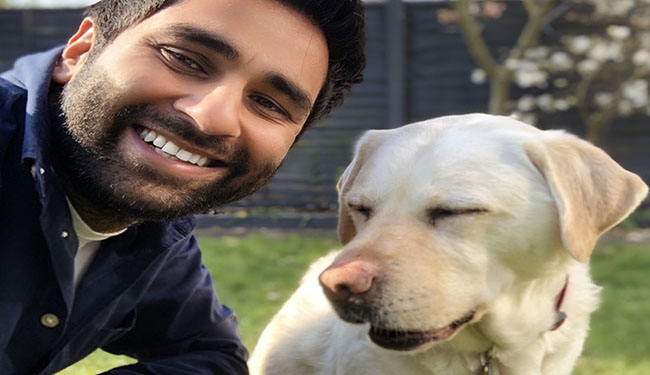 BLIND charity Fight for Sight is urgently calling for more funding to be invested into vital research for Charles Bonnet Syndrome, which is often confused with the onset of dementia.
BLIND charity Fight for Sight is urgently calling for more funding to be invested into vital research for Charles Bonnet Syndrome, which is often confused with the onset of dementia.
Doctor Amit Patel, pictured, lost his sight unexpectedly in 2015 and since then he regularly experiences visual hallucinations.
As a trauma doctor, Amit had a limited knowledge of CBS before he experienced it himself, having come across it very briefly in his studies at medical school.
He said: “One day, not long after I lost my sight, I was walking down the stairs in my house and this girl suddenly appeared in front of me. I realised it was the girl from the horror movie ‘The Ring’.
“The hallucination only lasted a few seconds, but it was enough for me to fall down the stairs. At that point I wasn’t really comfortable talking to people about what I was going through in losing my sight and I was very much in my head and in a bad place, so I put it down to that.
“After a few weeks though this same girl kept appearing and that’s when I knew I was having visual hallucinations and I thought that it may be Charles Bonnet syndrome.”
The Covid-19 pandemic and subsequent lockdown has only exacerbated Amit’s experience of CBS and he says he has had a lot more hallucinations in the last few months, and particularly in the early days and weeks of the lockdown.
Likewise, campaign group Esme’s Umbrella – which was set up to help support people living with CBS and works closely with Fight for Sight – say their helpline has received double the number of calls over the past five months, with some people saying the stress and isolation they’ve experienced during the pandemic has turned otherwise fairly benign images into frightening ones.
A team of researchers at Cardiff University, funded by Fight for Sight and Health and Care Research Wales has developed a novel method to induce controlled hallucinations in the lab, which will allow them to explore the mechanisms underlying CBS.
The team will use fully-sighted people to investigate the possibility that peripheral (‘side’) vision is more ‘suggestible’ than central vision. They are testing a hypothesis that following long-term central vision loss, patients with CBS pay more attention to their peripheral vision, which is more reliant on expectation and previous experience than central vision, and therefore prone to hallucinatory experiences.
Meanwhile at University of Oxford, researchers funded by Fight for Sight, Blind Veterans UK and Esme’s Umbrella, will use MRI scans to compare the brains of people with and without CBS to look at how they differ. In particular, they will measure the levels of chemicals in the visual areas of the brain to see whether they are abnormal in CBS, leading to the hallucinations.
Sherine Krause, chief executive of Fight for Sight, said: “So much more needs to be done to understand Charles Bonnet syndrome. This is an area of research that little is known about and has largely been neglected, so we are very pleased to fund these two important research studies.
“With a better understanding of the causes, we will be one step closer to developing a treatment and eventually a cure for the condition. This is just one area where much greater investment in eye research is needed to ensure we can continue transforming the lives of people with sight loss.”
Michael Bowdery, head of programmes at Health and Care Research Wales, said: “We are delighted to be working with Fight for Sight to support research into a condition that affects so many people but for which there is currently no known treatment or cure. We wish Matt and the team at Cardiff University the very best of luck.”

